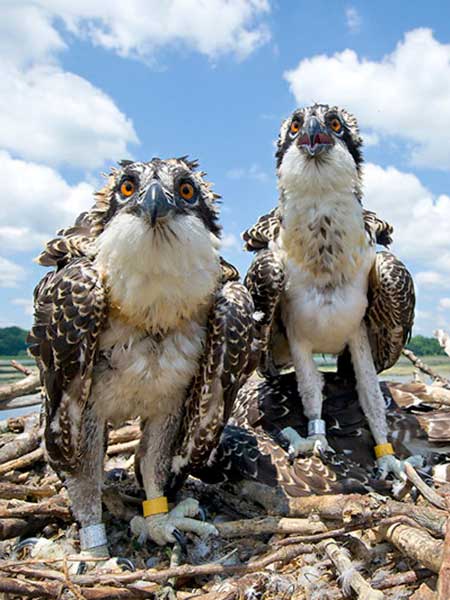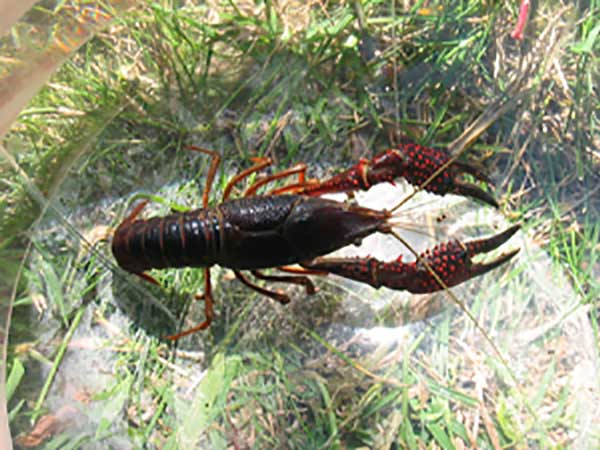- Details
By Louie Stout
The Michigan DNR’s proposed community park and boat access to Eagle and Juno lakes is moving through the system and gaining support - despite continued resistance from lakefront property owners.
The proposed development was approved by the Michigan Waterways Commission recently and now awaits final approval from the DNR Natural Resources Commission at its meeting Aug. 8.
But first, the DNR must present a preliminary review of its plans to the Ontwa Township Planning Commission Aug. 7.
Along with its blessing, the Waterways Commission recommended the DNR make the site fee-based, meaning users would have to purchase a recreation Passport sticker that also provides access to state parks, campgrounds and other fee-based boat launch sites.
Once the DNR Commission gives its approval, officials can finalize the $600,000 purchase from 1st Source Bank and start developing. The property sits across from the Eagle launch ramp and served as parking area for boaters before 1st Source Bank obtained it in a foreclosure. It consists of 9.62 acres on the east side of Eagle Lake Road.
- Details
(Provided by Michigan DNR)
 Photo Provided by Michigan DNRFew wildlife restoration programs have been more successful than Michigan’s effort to reintroduce osprey to southern Michigan. Starting in 1998, when some northern Michigan birds were moved to the Kensington Metropark in Livingston and Oakland counties, the DNR and a number of partner organizations have seen osprey numbers jump significantly across the southern third of the state.
Photo Provided by Michigan DNRFew wildlife restoration programs have been more successful than Michigan’s effort to reintroduce osprey to southern Michigan. Starting in 1998, when some northern Michigan birds were moved to the Kensington Metropark in Livingston and Oakland counties, the DNR and a number of partner organizations have seen osprey numbers jump significantly across the southern third of the state.
“Our goal was to have 30 breeding pairs in southern Michigan by 2020,” said DNR wildlife biologist Julie Oakes. “We were over 50 as of this year. We’ve definitely been very successful.”
Now, the DNR and volunteers are taking the program a step further, installing GPS-tracking transmitters on young male ospreys to see where and how they migrate.
- Details
 Red Swamp CrayfishThe Michigan DNR has discovered that anglers are purchasing red swamp crayfish from food markets and using them as live bait. It is illegal to import any live species of crayfish into Michigan for commercial bait purposes. Red swamp crayfish ("Procambarus" "clarkii") are native to the southeastern United States and are considered an invasive species in Michigan.
Red Swamp CrayfishThe Michigan DNR has discovered that anglers are purchasing red swamp crayfish from food markets and using them as live bait. It is illegal to import any live species of crayfish into Michigan for commercial bait purposes. Red swamp crayfish ("Procambarus" "clarkii") are native to the southeastern United States and are considered an invasive species in Michigan.
“This crayfish was found in two Wisconsin ponds in 2009, proving its ability to live in northern states such as Michigan,” said Nick Popoff, the DNR’s Aquatic Species and Regulatory Affairs Program supervisor. “The DNR is in the process of reviewing potential actions to prevent any introduction of this species of crayfish into our waters.”
- Details
The Michigan DNR announced the final totals from its spring fish stocking efforts.
The DNR’s Fisheries Division stocked a total of 19,130,659 fish that weighed 664,338 pounds and consisted of eight different species and one hybrid. To complete this task, it took 394 stocking trips to 729 stocking sites, with drivers travelling 106,235 miles in 2,648 hours using 17 specialized stocking trucks.
“It was another outstanding spring stocking season that will bring significant benefits and fishing opportunities to Michigan,” said DNR Fish Production Manager Gary Whelan. “Thanks to the hard work of our staff, we had minimal losses with this year’s fish and reached all of our target numbers.”
- Details
(Provided by Michigan DNR)
The Michigan DNR has renamed two special deer hunts for hunters with disabilities and modified the rules for eligibility and the use of ground blinds.
The Youth and 100 Percent Disabled Veteran Firearm Deer Hunting Days, scheduled for Sept. 21-22, has been renamed the Liberty Hunt. The Special Firearm Disabled Hunter Deer Hunting Days, scheduled for Oct. 17-20, is now called the Independence Hunt.
Participants in the Liberty Hunt were previously limited to veterans with 100-percent disability and youth younger than 17 years of age. The NRC has expanded the eligibility to include hunters who are legally blind or have been issued a permit to use a laser-sighting device or to hunt from a standing vehicle. The Department of Natural Resources estimates that fewer than 1,000 hunters have been issued these permits.


